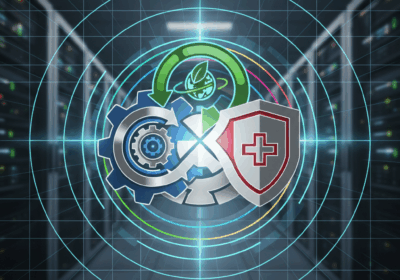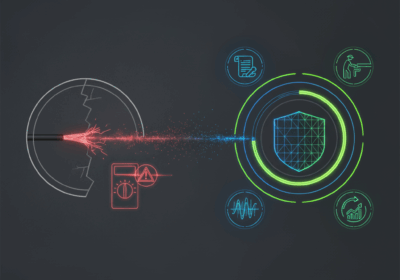Process Safety Management in Oil & Gas: Lessons from Global Implementation

Process Safety Management in Oil & Gas: Lessons from Global Implementation
Process Safety Management in oil and gas operations has evolved from reactive incident response to proactive risk prevention systems that integrate safety considerations throughout entire facility lifecycles. Yet despite decades of regulatory development and industry learning from major incidents, many organisations continue to implement PSM programmes as compliance exercises rather than recognising process safety as fundamental operational capability that determines both safety outcomes and business performance.
Through our partnership with ASafe Global and extensive experience across upstream, midstream, and downstream facilities, we have observed that successful PSM implementation requires comprehensive approaches that go far beyond regulatory compliance to embed safety management principles into operational culture and business processes. Organisations that adopt strategic approaches to PSM consistently achieve superior safety outcomes whilst avoiding costly incidents and regulatory complications that emerge from inadequate process safety management.
The challenge lies not merely in meeting regulatory requirements, but in developing process safety capabilities that adapt to evolving operational conditions, technology changes, and regulatory expectations throughout extended facility lifecycles. Many organisations treat PSM as static compliance frameworks rather than recognising process safety management as dynamic capabilities requiring continuous development and improvement.
Global PSM Framework Evolution
Process Safety Management frameworks have developed through decades of incident learning and regulatory evolution across different jurisdictions, creating complex regulatory landscapes that organisations must navigate whilst maintaining consistent safety performance standards across global operations.
Regulatory Framework Convergence and Divergence
PSM regulations originated from major incidents including Flixborough, Bhopal, and Piper Alpha, leading to regulatory frameworks such as OSHA PSM in the United States, SEVESO III in Europe, and similar regulations worldwide. These frameworks share common elements whilst reflecting different regulatory philosophies and implementation approaches that create both opportunities and challenges for multinational operations.
Regulatory convergence around common PSM elements including process hazard analysis, management of change, and incident investigation enables organisations to develop consistent approaches across jurisdictions. However, regulatory differences in specific requirements, enforcement approaches, and compliance expectations require adaptation of PSM programmes to local contexts whilst maintaining global consistency.
International standards including ISO 45001 and industry frameworks such as API RP 754 provide harmonised approaches to process safety management that bridge regulatory differences whilst supporting consistent implementation across global operations. These frameworks enable organisations to achieve regulatory compliance whilst building capabilities that exceed minimum requirements.
Industry Learning and Best Practice Development
Major incidents continue to drive process safety learning and regulatory evolution, with investigations revealing both technical failures and management system inadequacies that contribute to major accident scenarios. Incident learning must translate into systematic improvements in PSM programmes rather than reactive responses to specific failure modes.
Industry initiatives including the Center for Chemical Process Safety and Process Safety Institute provide frameworks and guidance for PSM implementation that reflect accumulated industry experience and best practices. These resources support programme development whilst enabling organisations to learn from industry experience rather than developing capabilities independently.
Global oil and gas companies increasingly share process safety information and best practices through industry associations and collaborative initiatives that accelerate learning and capability development across the sector. Knowledge sharing creates opportunities for rapid improvement whilst avoiding duplication of development activities.
Technology Integration and Digital Transformation
Digital technologies increasingly enable advanced process safety management capabilities including real-time risk monitoring, predictive analytics, and automated safety system management. Technology integration must support rather than replace fundamental PSM principles whilst providing enhanced capabilities for risk identification and management.
Internet of Things sensors and advanced analytics enable continuous monitoring of process conditions and safety system performance that supports both compliance demonstration and proactive risk management. Digital integration requires careful consideration of cybersecurity risks that could compromise safety system integrity.
Artificial intelligence and machine learning applications to process safety data can identify risk patterns and predict potential incidents before traditional monitoring systems detect problems. Advanced analytics must complement rather than replace human expertise whilst providing enhanced decision-making support.
Hazard Identification and Risk Assessment
Effective PSM programmes require systematic approaches to hazard identification and risk assessment that address both design-basis hazards and emerging risks throughout facility lifecycles. These assessments must balance comprehensiveness with practical implementation constraints whilst supporting ongoing risk management activities.
Process Hazard Analysis Methodologies
Hazard and Operability Studies remain fundamental to process hazard analysis, requiring systematic evaluation of process deviations and their potential consequences. HAZOP studies must address both normal operating conditions and abnormal situations including startup, shutdown, and maintenance activities that create different risk profiles.
Layer of Protection Analysis enables quantitative assessment of risk reduction measures and safety system performance that supports both design decisions and ongoing risk management. LOPA provides systematic approaches to evaluating safety system adequacy whilst identifying opportunities for risk reduction through additional protective measures.
Fault Tree Analysis and Event Tree Analysis provide complementary approaches to understanding failure mechanisms and consequence development that support both hazard identification and risk assessment activities. Quantitative risk assessment methods enable comparison of different risk scenarios whilst supporting resource allocation decisions.
Major Accident Hazard Assessment
Major Accident Hazard identification requires systematic evaluation of scenarios that could result in multiple fatalities, significant environmental impact, or major business disruption. MAH assessment must consider both high-consequence events and credible escalation scenarios that could develop from seemingly minor incidents.
Bow-tie analysis provides visual representation of major accident scenarios including both prevention and mitigation measures that support understanding of complete risk management approaches. Bow-tie models enable identification of critical risk controls whilst supporting systematic evaluation of risk management effectiveness.
Domino effect analysis addresses scenarios where initial incidents could trigger secondary events that escalate consequences beyond design-basis assumptions. Escalation analysis becomes particularly important for complex facilities where multiple process units create potential for cascade failures.
Dynamic Risk Assessment and Management
Risk assessment must address changing conditions throughout facility lifecycles including aging infrastructure, process modifications, and operational changes that affect risk profiles. Dynamic risk assessment requires ongoing evaluation rather than periodic studies that may miss emerging risks.
Real-time risk monitoring systems enable continuous assessment of process conditions and safety system status that supports proactive risk management. Continuous monitoring requires integration with operational control systems whilst maintaining independence of safety-critical functions.
Predictive risk assessment using advanced analytics can identify developing risk conditions before traditional monitoring systems detect problems. Predictive approaches require robust data systems and analytical capabilities whilst maintaining focus on fundamental risk management principles.
Safety Management Systems Integration
PSM implementation requires integration with broader safety management systems and operational management processes that ensure safety considerations influence all business activities. Integration must balance systematic approaches with operational flexibility whilst maintaining focus on major accident prevention.
Management System Architecture
Process safety management systems must integrate with occupational health and safety management, environmental management, and quality management systems to provide comprehensive approaches to operational risk management. Integration prevents duplication whilst ensuring all risk categories receive appropriate attention.
Safety management system design must address both technical requirements and organisational capabilities to ensure systems remain practical and sustainable throughout changing operational conditions. System design requires balance between comprehensiveness and usability whilst supporting continuous improvement activities.
Documentation and information management systems must provide accessible information for operational decision-making whilst meeting regulatory compliance and audit requirements. Information systems must support both routine operations and emergency response activities whilst maintaining data integrity and security.
Competency and Training Management
Process safety competency requirements extend beyond technical knowledge to include risk assessment capabilities, emergency response skills, and safety leadership behaviours that support effective safety culture development. Competency management must address both individual capabilities and organisational capacity for safety management.
Training programme development must address different roles and responsibilities within PSM programmes whilst providing practical skills that support effective programme implementation. Training effectiveness requires ongoing assessment and improvement based on operational performance and incident learning.
Knowledge management systems must capture and retain process safety expertise whilst supporting knowledge transfer and organisational learning. Effective knowledge management prevents loss of critical information whilst enabling continuous improvement in safety management capabilities.
Performance Measurement and Monitoring
PSM performance measurement requires both leading and lagging indicators that provide insights into programme effectiveness and emerging risk trends. Performance measurement must balance quantitative metrics with qualitative assessments whilst supporting management decision-making.
Safety performance monitoring must address both compliance demonstration and continuous improvement identification. Monitoring systems must provide early warning of developing problems whilst supporting systematic approaches to performance improvement.
Management review processes must ensure senior leadership engagement with PSM performance whilst providing accountability for safety management effectiveness. Regular review processes must address both current performance and strategic safety management issues.
Critical Safety System Management
Process safety depends on critical safety systems including safety instrumented systems, pressure relief systems, and fire and gas detection systems that must maintain reliability throughout facility lifecycles. Critical system management requires systematic approaches to design, maintenance, and performance verification.
Safety Instrumented System Management
Safety Instrumented System design and management must comply with IEC 61511 requirements whilst addressing specific facility hazards and risk management objectives. SIS management requires both technical expertise and systematic management processes that ensure continued system effectiveness.
Safety Integrity Level assessment and verification requires quantitative approaches to system reliability assessment that demonstrate compliance with risk reduction requirements. SIL verification must address both system design adequacy and ongoing maintenance effectiveness.
Functional safety management throughout SIS lifecycles requires systematic approaches to modification management, testing, and performance monitoring that maintain system integrity. Management of change processes must address both hardware modifications and software changes that could affect system performance.
Mechanical Integrity Management
Pressure system integrity management requires systematic approaches to inspection, testing, and maintenance that ensure continued safe operation throughout equipment lifecycles. Mechanical integrity programmes must balance safety assurance with operational availability whilst complying with regulatory requirements.
Risk-based inspection programmes enable optimisation of inspection intervals and methods based on equipment condition and consequence assessment. RBI approaches must maintain safety margins whilst enabling efficient resource allocation and maintenance planning.
Materials management and corrosion control programmes address degradation mechanisms that could compromise equipment integrity over time. Systematic approaches to materials selection and corrosion monitoring support both safety assurance and operational reliability.
Emergency Response and Mitigation Systems
Fire and gas detection systems require systematic design, installation, and maintenance approaches that ensure effective emergency detection and response. Detection system effectiveness depends on both technical design and integration with emergency response procedures.
Emergency shutdown systems must provide reliable isolation and safe shutdown capabilities for major accident scenarios. ESD system design must address both automatic activation and manual override capabilities whilst maintaining system reliability.
Emergency response planning must address major accident scenarios including evacuation procedures, emergency communications, and coordination with external emergency services. Response planning requires both technical preparation and regular training and drills that maintain response capability.
Operational Risk Management
Effective PSM implementation requires integration with daily operational activities through systematic approaches to risk identification, assessment, and management that become embedded in operational culture and procedures.
Management of Change
Change management systems must address all modifications that could affect process safety including equipment changes, procedure modifications, temporary modifications, and organisational changes. MOC systems must balance operational flexibility with safety assurance whilst maintaining systematic evaluation of safety implications.
Pre-startup safety review procedures ensure modifications are properly implemented and safety systems function correctly before returning equipment to service. PSSR requires systematic verification of safety measures whilst enabling efficient startup procedures.
Emergency change procedures must provide mechanisms for urgent modifications whilst maintaining appropriate safety oversight. Emergency procedures must balance operational needs with safety requirements whilst ensuring proper documentation and follow-up activities.
Contractor and Personnel Management
Contractor safety management requires systematic approaches to qualification, training, and oversight that ensure contractors understand and comply with facility safety requirements. Contractor management must address both technical competency and safety culture alignment.
Personnel qualification and training must address process safety knowledge requirements whilst providing practical skills for safe operations. Training programmes must consider both initial qualification and ongoing competency maintenance throughout changing operational conditions.
Work permit systems must integrate process safety considerations with routine maintenance and operational activities. Permit systems must provide systematic hazard identification whilst enabling efficient work execution and coordination.
Incident Management and Learning
Incident investigation must address both immediate causes and underlying management system deficiencies that contribute to incidents. Investigation quality determines learning effectiveness whilst supporting systematic improvement in safety management.
Near-miss reporting and investigation programmes enable learning from events that could have resulted in major accidents. Proactive learning from near-misses provides opportunities for improvement before major incidents occur.
Industry incident sharing and learning enable organisations to benefit from external experience whilst contributing to sector-wide safety improvement. Effective learning requires systematic evaluation of external incidents for applicability to local operations.
Performance Excellence and Continuous Improvement
PSM programmes must evolve continuously to address changing operational conditions, regulatory requirements, and industry best practices. Performance excellence requires systematic approaches to programme evaluation and improvement that build capabilities over time.
Audit and Assessment Systems
PSM audit programmes must provide systematic evaluation of programme implementation effectiveness whilst identifying opportunities for improvement. Audit quality determines the value of assessment activities whilst supporting management oversight and regulatory compliance.
Self-assessment capabilities enable ongoing programme evaluation without relying solely on external audits. Internal assessment capabilities support continuous improvement whilst reducing dependence on external resources for programme evaluation.
Regulatory compliance assessment must address evolving regulatory requirements whilst ensuring programme effectiveness exceeds minimum compliance standards. Compliance management must balance regulatory requirements with operational efficiency whilst maintaining safety performance.
Benchmarking and Industry Comparison
Process safety performance benchmarking enables comparison with industry standards whilst identifying opportunities for improvement. Benchmarking must address both outcome measures and management system effectiveness whilst considering operational context differences.
Best practice identification and implementation enable organisations to learn from industry leaders whilst adapting practices to local conditions. Best practice adoption requires systematic evaluation and implementation approaches whilst maintaining focus on fundamental safety principles.
Innovation and technology adoption must consider both safety enhancement opportunities and implementation risks. Technology integration requires careful evaluation whilst maintaining proven safety management approaches.
Culture and Leadership Development
Safety culture assessment and development require systematic approaches to understanding and improving organisational attitudes, behaviours, and systems that affect safety performance. Culture development requires long-term commitment whilst providing foundation for sustainable safety improvement.
Leadership development programmes must address both technical knowledge and safety leadership capabilities that support effective safety culture. Leadership effectiveness determines programme success whilst requiring ongoing development and support.
Employee engagement and participation programmes enable workforce involvement in safety management whilst supporting continuous improvement activities. Engagement programmes must provide meaningful participation opportunities whilst maintaining management accountability for safety performance.
Future-Proofing Process Safety Management
PSM programmes must anticipate future challenges including aging infrastructure, evolving technology, changing workforce demographics, and increasing regulatory expectations. Future-proofing requires strategic approaches to capability development whilst maintaining current safety performance.
Digital Transformation Integration
Digital technologies offer opportunities for enhanced process safety management whilst creating new risks that must be managed systematically. Digital integration must support rather than compromise fundamental safety principles whilst providing improved capabilities.
Cybersecurity risk management becomes critical as process safety systems increasingly depend on digital technologies. Cyber-physical security requires integrated approaches that address both cyber threats and physical safety risks.
Data analytics and artificial intelligence applications can enhance risk identification and management whilst requiring careful validation and human oversight. Advanced analytics must complement rather than replace human expertise whilst providing enhanced decision-making support.
Regulatory Evolution and Compliance
PSM regulations continue evolving with increased emphasis on management system effectiveness, performance measurement, and continuous improvement. Regulatory evolution requires anticipation whilst maintaining compliance with current requirements.
Global regulatory harmonisation creates opportunities for consistent PSM approaches whilst requiring adaptation to local implementation requirements. Harmonisation efforts support efficient global operations whilst respecting local regulatory contexts.
Enforcement trend analysis enables anticipation of regulatory focus areas whilst supporting proactive compliance management. Understanding enforcement patterns supports resource allocation whilst maintaining comprehensive compliance approaches.
Workforce and Capability Development
Aging workforce and knowledge transfer challenges require systematic approaches to capability preservation and development. Knowledge management systems must capture critical expertise whilst developing new capabilities for evolving operational requirements.
Skills gap analysis and capability development planning must address both current needs and future requirements for PSM implementation. Capability development requires long-term planning whilst addressing immediate operational requirements.
Technology-enabled training and competency development can provide enhanced learning opportunities whilst maintaining focus on practical application and skill development. Training innovation must support learning effectiveness whilst maintaining proven educational approaches.
Process Safety Management represents fundamental capability for oil and gas operations that determines both safety outcomes and operational success. Effective PSM implementation requires comprehensive approaches that integrate technical requirements with management systems and organisational culture whilst supporting continuous improvement and adaptation to changing conditions.
Our experience through the AuditCo and ASafe Global partnership demonstrates that strategic approaches to PSM development deliver superior safety outcomes whilst supporting operational excellence and regulatory compliance. As process safety requirements continue evolving and operational complexity increases, sophisticated PSM capabilities become essential rather than optional organisational competencies.
Success requires understanding that process safety management provides foundation for sustainable operations rather than simply regulatory compliance. Organisations that embrace comprehensive PSM programmes create competitive advantages through superior safety performance and operational reliability whilst building capabilities that adapt to future challenges and opportunities.
For More Information Visit https://asafeglobal.com/ or contact info@auditco.com.au



